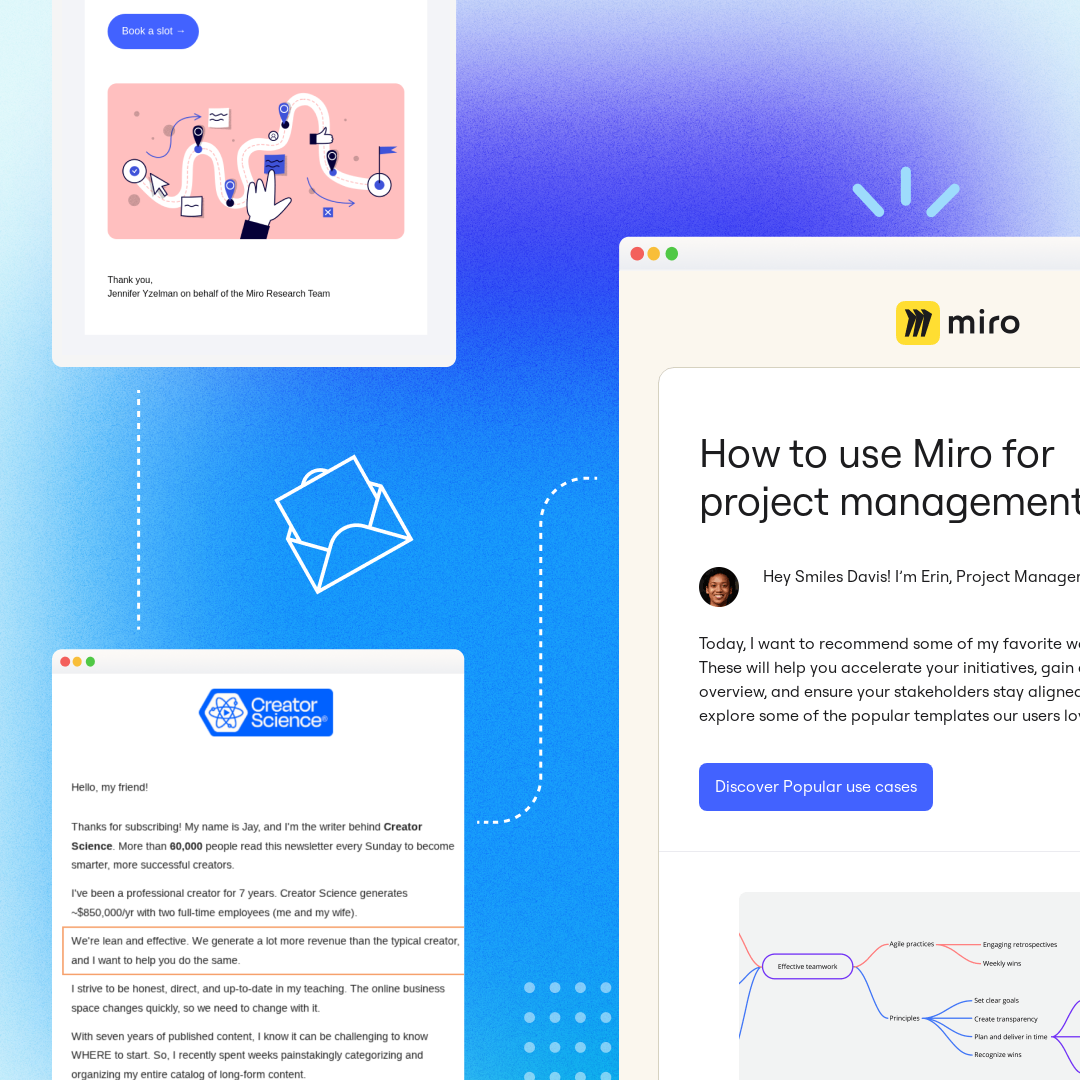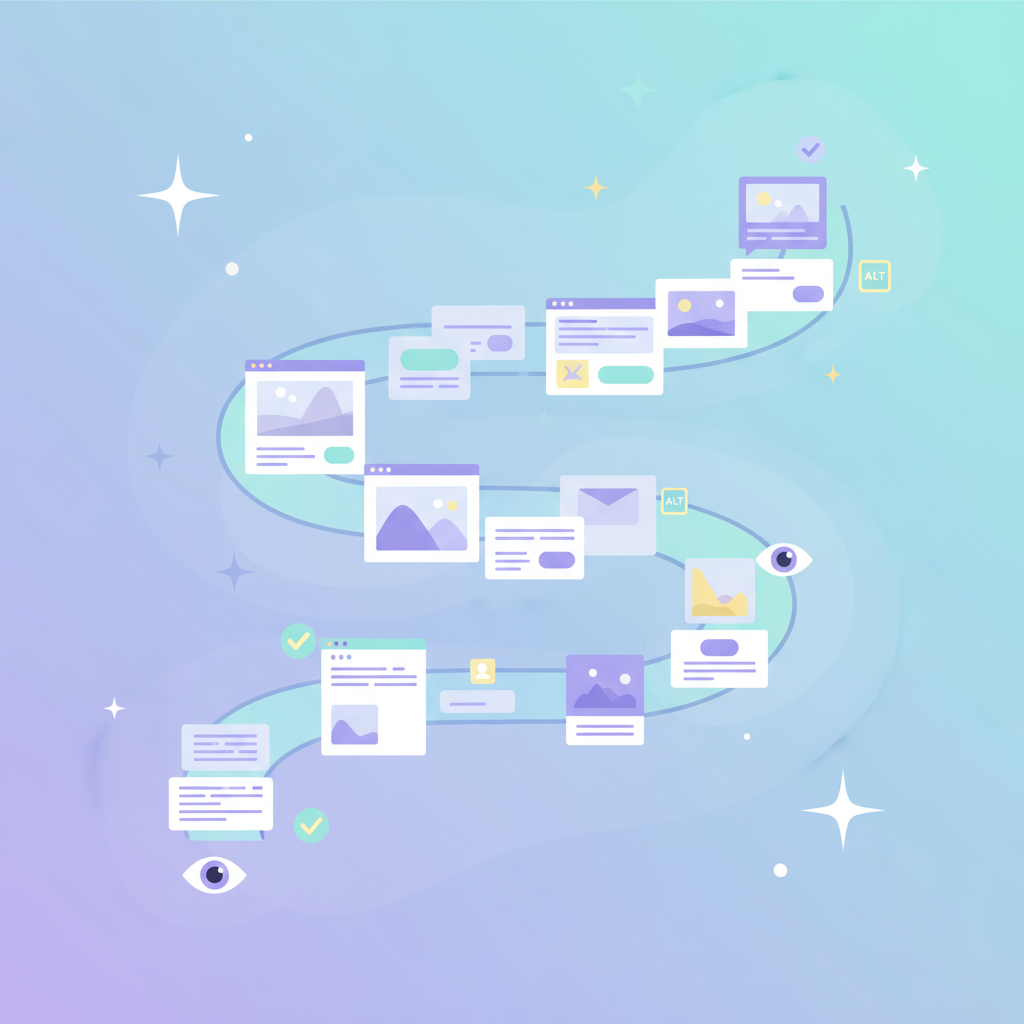
First impressions mean everything — and with a first impression, you only get one chance! In the world of email marketing, email design is even more important than you might think: It’s one of the best ways to catch your readers' attention, enticing them to read to the end and follow your call to action (CTA). By focusing on email design best practices, you can create emails that are a pleasure to read, leading to a better email conversion rate. Here are some tips on using stunning email templates to create top-notch emails.
#1. Optimize the subject line
The subject line of your email is often the first thing people see, and it's essential to make it count. There are many different ways to write an eye-catching subject line that grabs your readers’ attention. Consider including a teaser about what’s in the rest of your email – but don’t give too much away! You want to suggest a question so compelling that your readers choose to click through to find the answer. (In the example below, CNET does this effectively with a counterintuitive subject line sure to raise eyebrows.)If you prefer a more straightforward approach, you can promise valuable information (like James Clear does below), or use a breaking news story from your industry to get attention (as Tech Crunch does here). And don't forget, you can further improve your email conversion rate by making sure to keep your subject line short (under 50 characters), because longer subject lines will get cut off on mobile devices.

#2. Fine-tune snippet text
Many email providers have a feature called snippet text on both desktop and mobile. Essentially, this gives a short preview (often 100 characters) of the copy that’s inside the email; in the image below, the snippet text is the sentence below the bolded sender name and subject line. Your snippet text is valuable — use that space wisely and don’t repeat what you said in the subject of the email. This snippet text can actually serve as a CTA in itself, prompting your reader to open the email.Below, Vox Sentences sent an email with snippet text promising news about a new budget deal. The sentence cut off just before giving more information, so readers are enticed into clicking to read more.

#3. Follow email design best practices
Once your reader opens the email, you want to keep them there — and one way to do that is by designing a good email with beautiful colors and images, creating a pleasurable reading experience. Choose a clear, on-brand color palette and include bright imagery. Here, Century21 accomplished this by creating a unique bright-red graphic with an original photo, plus a text overlay explaining the point of the email. By using stunning email templates to optimize design elements like imagery and color, you can retain more readers.Subject line: Don’t. Miss. Out.

#4. Make things easy
What do you want your email readers to do next? Whether it's to go premium, visit your website, or make a purchase, you have to make it as easy as possible for them to take that next step. Design your email layout so that readers' eyes will be immediately drawn to the most important element: the CTA.In this recent email from Trade Coffee, the company included a CTA right at the beginning of the email, in the middle of the screen. And as readers scrolled down, there were more CTAs (in this case, “subscribe” buttons) in every section, creating plenty of opportunities for a reader to easily opt-in.You can also utilize positioning to strategically place your CTA in the email. People generally read from the top left to right of an email and the scan down, so try putting your CTA near the bottom or the right. Linking images can also help improve email conversion rates. Overall, making sure your CTA is easily visible is one of the most essential email design best practices.Subject line: The secret’s out…

#5. Strategically place text
Aim to strike a good balance of text and images in the email layout to make your email easy and inviting to read. Many people simply scan through their emails, skimming the text instead of reading every word. By breaking your text up and making it easy to spot the highlights, readers will be more likely to retain key points. Try creating a small section of text to accompany each image you include; each section should have its own headline and make one central point.Your copy needs to be top-notch, too. Good copywriting can help email conversion rates skyrocket. Here, body brand Billie used fresh, simple language to promote its new summery product.Subject line: Our new color for summer!

#6. Create mobile-friendly emails
Worldwide, almost half of all Internet traffic is mobile. And here’s another memorable statistic: Emails that don’t display well on mobile will be deleted within three seconds in 70 percent of cases!You can improve your email conversion rate by making your emails mobile-friendly. Include text breaks and use a large font size; test your email layout to discover any potential problems.Make absolutely certain to use a responsive email template or other responsive design. The Groupon email shown here had two columns when viewed on desktop, but on mobile that changed to just one column that was easy to scroll through and read.Subject line: Kick off the end of the summer with 25% off

Wrap-up: Improve your email conversion rate
Ready to implement all these tips and start improving your email conversion rate? BEE's drag-and-drop email editor is full of stunning email templates you can use to create emails people will want to open. Check out these professionally-designed templates for your next set of marketing emails — they’re simple to tailor and can help your email conversion rate rise!



